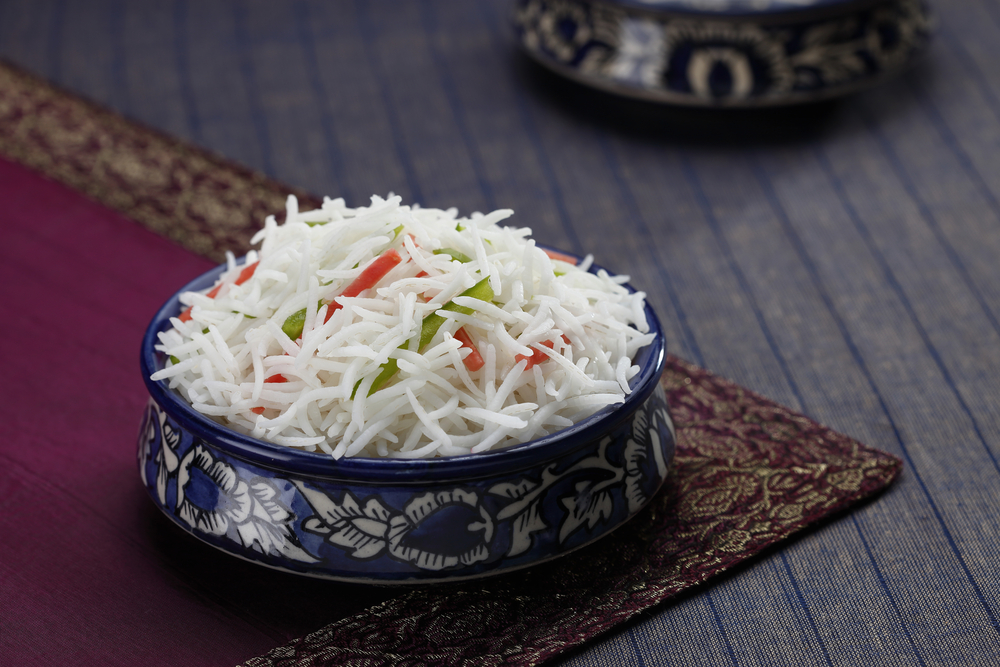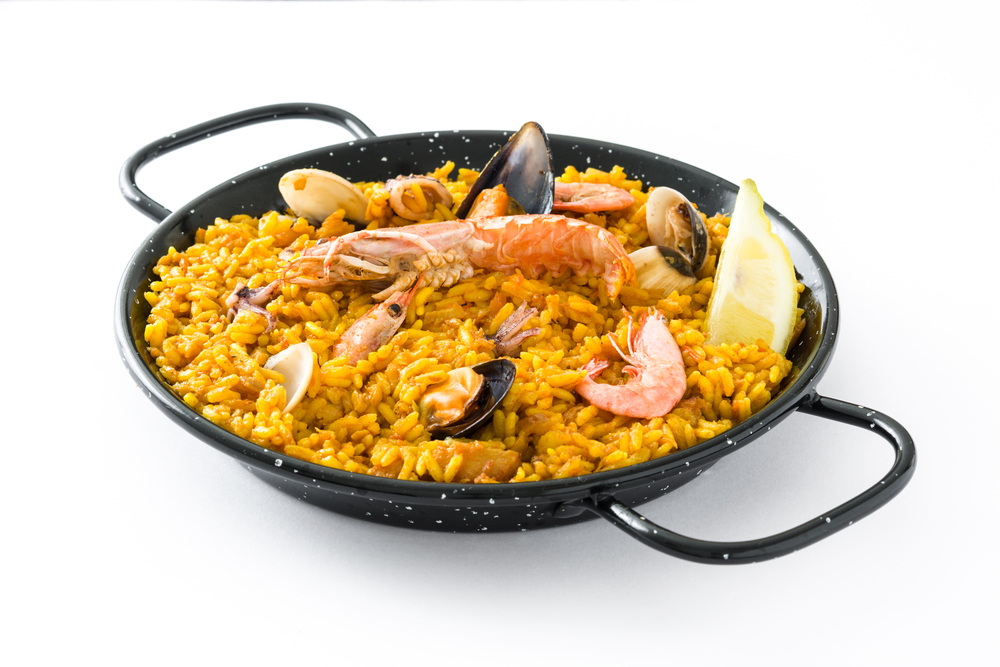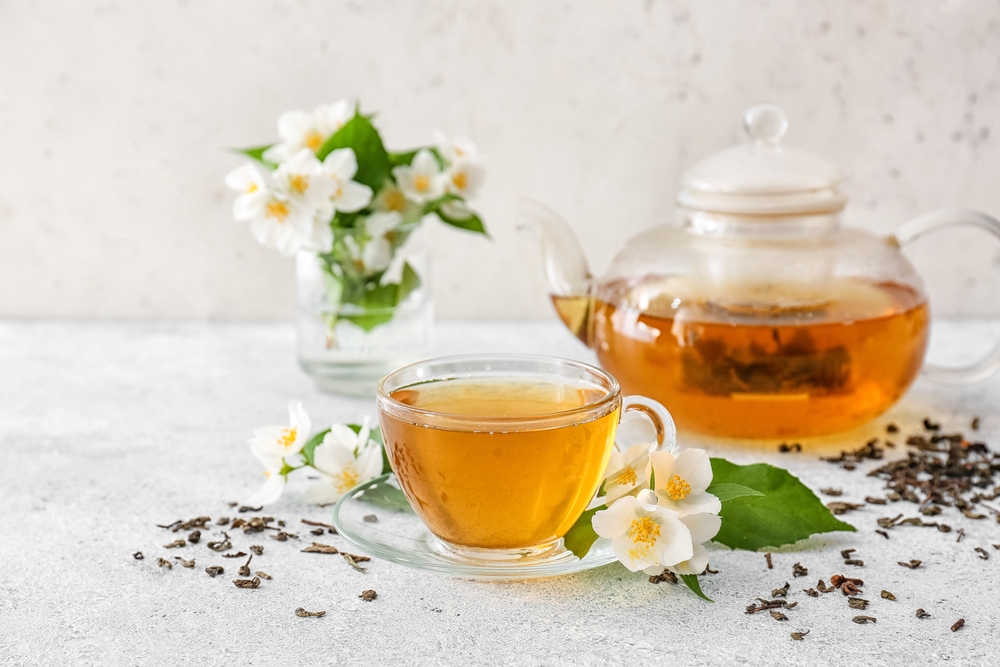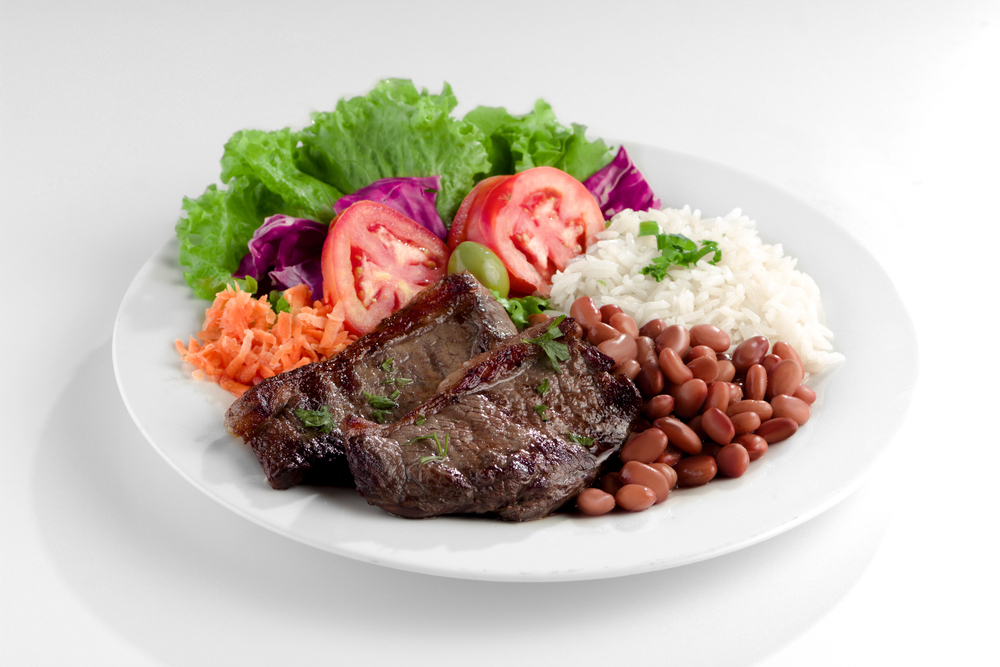Rice is a staple food for many cultures and countries. It is a filling grain that can be used in hundreds of different ways. As a side dish, a base, or the main event itself, there’s no denying that rice has quite the range.
Though, one trip to the rice aisle in a grocery store will quickly prove that not all rice is created equal. Categorized by milling method, grain size, cooking methods, and more, there are roughly 120,000 varieties of rice. While your local food mart will not have every type on tap, you will find at least two: basmati and jasmine.
When it comes to basmati rice vs. jasmine rice, who comes out on top? While they have different structures and applications, basmati and jasmine rice are also similar in many ways. Basmati rice is best in pilaf and Indian curry, jasmine is better in Japanese curry or paella.

Basmati Rice vs Jasmine Rice
In the battle between basmati rice and jasmine rice, there are a lot of important factors to weigh in. Grain shape, aroma, how sticky or dry it is when cooked, and of course flavor are all worth consideration. First, however, it’s important to dissect the differences between jasmine rice and basmati rice.
The Difference Between Basmati Rice and Jasmine Rice
Texture
The most noticeable element that sets basmati and jasmine rice apart is their texture. Both are long grain varieties of rice. When uncooked, jasmine rice is slightly translucent and has rounded edges, while basmati rice is sharp and slim.
This slight variation in shape is why the two are so opposed to each other when cooked. The starches in basmati rice bind with another component called amylose, which causes the grains to stay separated. The texture of basmati rice is fluffy, slightly drier, and chewy.
On the other hand, jasmine rice falls short on amylose but makes up for it with amylopectin. This combo makes for a sticky, easy to clump rice. Jasmine rice tends to feel moist, clingy, and soft.

Aroma
Both jasmine rice and basmati rice are named or referred to by their aromas, and are classified as “aromatic rices”. Jasmine rice is frequently called “Thai fragrant rice.” Basmati, or bāsmatī, is a Hindi word translating to “fragrant” or “full of aroma.”
Jasmine rice’s scent is described as being “popcorn like” while carrying subtle floral notes, hence the flowery nomenclature.
Basmati rice has a smell that is likened to being more ‘buttery’, though it does not taste like butter.
Flavor
In terms of jasmine rice vs basmati rice, what most chefs are concerned with is the flavor. What does basmati rice taste like? Does jasmine rice taste like jasmine?
The appeal of rice is often that it doesn’t have an especially powerful flavor, which is why it’s so versatile. Bear in mind that in saying that basmati has a spicy, nutty taste, this is only in comparison to other rices. It is not notably spicy and will not come up tasting of almonds.
Basmati rice tastes nutty with a lightly spiced kick, and jasmine rice is sweeter while still having some nuttiness. Both rices are also faintly floral, resembling the tropical pandan plant.

Health Benefits
If you are concerned with your wellbeing, you may wonder if jasmine rice or basmati rice is healthier. Of course, unless you are eating a plain bowl of rice, the things you pair with the rice will matter most. That said, there are only minor nutritional differences between jasmine and basmati rice.
Just as they share similarities in flavor and aroma, they have similar nutritional profiles. However, basmati rice has a lower glycemic index than jasmine rice. Basmati rice has an index between 56 and 69, which is much better when compared to jasmine’s 89.
With many grain-based foods, opting for whole grain varieties of both will net a higher fiber content.
Origin
Another key difference between jasmine rice and basmati rice is where they originated.
Basmati rice comes from India, and has been cultivated there for centuries. In fact, India produces over 70% of basmati rice enjoyed throughout the world. Basmati rice is also grown in Pakistan, Nepal, Indonesia, and Sri Lanka.
Usually, when jasmine rice is imported to the United States, it is being sent from Thailand. Some jasmine rice is also cultivated in Vietnam. Cambodia has specific types of rice that it cultivates, but they are still considered under the jasmine umbrella.
Basmati Rice VS. Jasmine Rice In Cooking
The main reason people want to know the differences between basmati rice vs jasmine rice is for specific recipes. Since they have such a strong difference in texture, they have entirely distinct operations.
For Curry
When serving up a steamy, hearty curry, the rice it is served with needs to be able to soak up flavor. The right rice will add body to curry, making the savory dish even more filling.
There are hundreds of varieties of curries, and in truth this can be decided by what type of curry you’re making. Basmati rice originates from Nepal, India, and Pakistan. So, if you are making Indian curry, basmati rice is the traditional choice, as it will naturally pair the best.
For Southeast or East Asian variants, like thick, sweet, and spicy Japanese curry, jasmine rice is the way to go. The sweet, popcorn-like flavor will pair better and be a more optimal vehicle for the curry itself.
For Pilaf
Pilaf, with aromatic flavors of fennel, garlic, shallots, and chicken broth, is a simple to prepare rice dish. Rice pilaf needs to be as fragrant as it is fluffy, which is where basmati rice will shine.
The best rice for making pilaf is basmati, hands down. The starch in the long slender grains means it will bind excellently with chicken broth and rich butter. Jasmine rice is too sticky and clumpy to use perfectly in pilaf, though it may be okay in a pinch.
For Paella

Usually served right out of the cooking pan, paella is the signature dish of Valencia, Spain. It is considered by some to be the national dish of Spain itself. Paella is made with chicken, seafood, spices like dry bay leaves and saffron, vegetables, and of course: rice.
As for which rice works best in paella, between basmati and jasmine, the clear choice is jasmine. Jasmine rice’s rounded shape and moistness make for a rice that will effortlessly support the feast of spices and seafood. When using jasmine rice in paella, be sure to not rinse it first; this will remove the starch coating.
For Fried Rice
Once again, the debate of jasmine rice vs basmati rice can reveal that certain things come down to user experience. In fried rice, for example, jasmine and basmati will yield different results. How these results are received, however, is subjective.
Fried jasmine rice will clump more easily, making it a breeze to eat with chopsticks. The rice will also be much softer and have a bit more moisture to it. If you do not like your fried rice to be extra crispy, then jasmine rice is the ideal ingredient.
As for basmati rice, this is the kind you will most likely find in restaurant fried rice. Since it is a bit on the drier side, it will crisp up nicely in the pan when being fried. The savory nuttiness of basmati makes for a delicious fried rice.
Both, of course, will fare well to freezing or reheating. If you are reheating fried rice made with jasmine rice, be cautious when trying to use a microwave. The extra moisture in jasmine will get very soggy when reheated this way.
Other Recipes
For region specific recipes, stick to the type of rice that originated from that country, if applicable. The reason being that these dishes were likely crafted with that specific type of rice in mind. For example, if you are making a Pakistani kabuli pulao, stick with basmati rice, since basmati is sourced from Pakistan.
For desert applications like Yorkshire pudding, German sweet rice, or sticky rice and almond cake, opt for jasmine. Many of these will need the rice to be soft and moist, which is where jasmine will shine. Jasmine also has an ever-so-slightly sweeter taste, plus a floral quality that will lend complexity.
Can I Substitute Jasmine Rice for Basmati?
Substituting jasmine rice for basmati and vice versa should be decided on a case by case basis. Some dishes will need a specific structural component, like the stickiness afforded by jasmine rice. Others will need loose, fluffy grains, afforded only by basmati.
In a pinch, however, you will be fine to sub in either type of rice in almost any recipe. It would be better to have your pilaf be a little too sticky than to not have any pilaf at all.
Conclusion
The debate of basmati vs jasmine rice can be a tricky one. For every point where they are different, there is one where they are the same. Both are aromatic, medium to long grain, and have a somewhat floral taste.
Jasmine rice is sticky, moist, and clumps easily, while basmati is fluffy, dryer, and more savory. Basmati rice comes from India and Pakistan, and is perfect in pilaf and Indian curry. Hailing from Thailand and Vietnam, however, jasmine rice is right at home in paella and Japanese curry.







